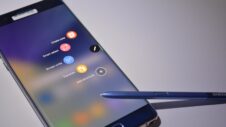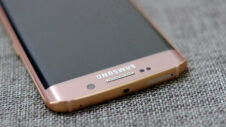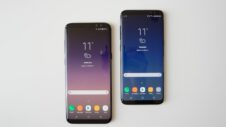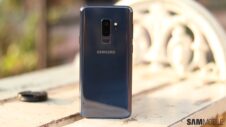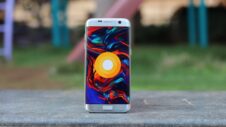Until now, consumers have been forced to choose between an elegant design and the enhanced convenience offered by removable batteries. However, the G5 doesn’t compromise beauty or convenience. It has all: the sleek, full metal unibody as well as removable batteries thanks to the modular-type design. –Juno Cho, President & CEO, LG Electronics, MWC 2016 (LG G5 Live Event at Mobile World Congress)
“To be or not to be” was the famous question Shakespeare placed within his own writing that has become a beloved quote here in my part of the world. We need not know the context of Shakespeare’s question, though, to know that existence (to be) and non-existence (not to be) are polar opposites of each other. Taking an example from this, we’d say that a person cannot “exist” and “not exist” at the same time. The car can’t turn both left and right at the stop sign – it either turns left (one direction) or right (the other), but not both. “Left” and “right” are opposite directions, contradictory directions in a sense, and even highways and streets are designed so that it is clear that one can only go in two directions: left and right or up and down the street.
LG made it clear in launching its G5 on the same day as Samsung did its Galaxy S7 and Galaxy S7 edge at Mobile World Congress 2016 that it wouldn’t back down from tackling the Korean giant head-on. And yet, despite what impressions you may or may not have of the G5 (that’s not what this post is about), Samsung fans can’t help but think that LG hasn’t quite caught up to Samsung when it comes to defining the nature of its latest smartphone.
The LG G5 has a case of confused identity. Here’s the nature of the confusion: whether or not the LG G5 is a full metal unibody design or a full metal modular design. The words of LG CEO Juno Cho are a perfect case in point: within the same sentence, Cho says that the “full metal unibody” has been combined with the “modular design” due to the removable battery that remains within the G5.
And yet, I’m afraid Cho hasn’t quite thought through the nature of what he’s saying. In effect, he’s saying that the G5 is both unibody and modular at the same time – and I’m afraid that is a logically incoherent statement.
By definition, the word “modular” refers to the idea of “modules,” which we know the G5 has: the 360-degree camera, the Bang & Olufsen Hi-Fi audio module (which won’t be coming to the US or Korea, by the way), and the company’s 360 VR headset. These modules are what allow us to call the G5 a “modular” phone. Additionally, the G5 has a bottom portion of the phone that can be detached from the phone itself to replace the battery or add modules.
Modular phones can have their hardware supplemented in this way, can be easily disassembled. A teardown of the LG G5 shows that you must first remove the module (the bottom portion) before you can detach the glass panel from the metal back cover. A unibody phone would allow you to detach the glass panel from the entire back cover, with the glass panel and back cover being 2 pieces to separate, not 3 pieces as is the case with the G5.
Unibody phones, however, cannot be easily disassembled and don't have additional “parts” to detach.
Unibody phones are whole alone and need not be supplemented with additional hardware, nor have a portion of their own removed to make room for something else. Take the Galaxy S7 and Galaxy S7 edge for example. Yes, you can place them within Gear VR, for example, but you don’t detach the bottom portion of the phone in order to connect it to Gear VR.
Unibody phones like the Galaxy S7 and Galaxy S7 edge, as well as the Galaxy A3, A5, and A7, for example, have sealed batteries and sealed parts. These phones are not easy to repair, and that’s what we’d expect of unibody phones as opposed to the LG G5 that has received an easy repairability score. Any phone with a removable portion is at risk for water damage, which in part explains Samsung’s decision to seal its battery in the S7 and S7 edge as it did with last year’s devices.
Think of a number of recent phones that all feature removable batteries: would we call the LG G4 a unibody phone? Not if you chose your leather back for it. Would we call the LG V10 a unibody phone with the removable back cover? The Galaxy S5? These phones have removable back covers, which makes them semi-modular. LG took away the removable back cover with the G5 but created a removable bottom cover instead. Does that sound like a unibody construction to you?
No, the LG G5 isn’t a unibody phone, though it could be called unibody-esque (though that’s not synonymous with “unibody”). It’s modular, and it should be unapologetically so. What LG said at MWC earlier this year is that it wanted to give consumers design without sacrificing functionality and convenience. In the battle of these two great desires, design and functionality/convenience, only one can win. At some point, one will step down and yield to the other, one will exert supremacy and dominance over the other, but both can’t win. Both won’t win; one will win, the other will lose. One winner, and one loser. That’s what happens when two great contradictions like “modularity” and “unibody” fight against one another: both can’t co-exist in the same hardware.
It’s as commonsensical as “left and right,” “plus and minus,” “north and south,” “up and down,” and so on. The HTC 10 is a unibody phone, a seamlessly-constructed piece of metal with gapless design. The Galaxy S7 edge is a Gorilla Glass 4 wraparound of the sexiest design, with gapless glass and metal construction. Look at the bottom gap of the G5, and it all becomes clear that the G5 has no claim to the word “unibody.” Is the G5 modular? Yes or no, not yes and no. Is it unibody? The same answers apply without any room to say yes and no. To answer these questions, you must choose one (yes) or the other (no).
So, the “unibody” and “modular” claims held up in the same sentence by LG may sound like clever marketing, but they’re confused marketing at best and an identity problem at worst for both the phone and the company touting it as innovation. C’mon, LG: put the fancy word-twisting aside and decide what your phone is – for the sake of your customers. You owe it to them, at least.

